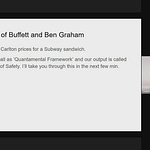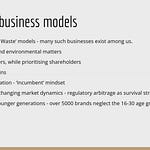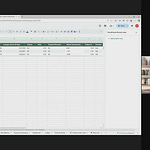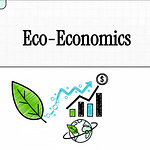Thanks to everyone who joined my Sunday session on “Understanding the Macro Environment as an Equity Investor”! For those who missed it, the recording is out now.
It’s easy to get lost in macro data like GDP, interest rates, and inflation. My goal was to provide a simple framework to make this data usable in your investment journey.
Key Takeaways from the Session
The Four Macro Cycles
The economy doesn’t just grow—it moves through four critical cycles:
Growth
Deflation
Decline
Inflation
Understanding where an economy is in these multi-year cycles is paramount. Remember, various global economies can be in different cycles simultaneously!
The Economic Pyramid: Beyond GDP
GDP is only the tip of the iceberg. The economy’s foundation is built layer by layer:
Consumer Spending (The Base): The economy grows only because consumers spend; policy and supply are secondary.
Trade: The next level, encompassing supply chains, import, export, and corporate buying.
Public Finances: Government investment and borrowing, typically recovered through taxes.
Interest Rates: A highly publicized, but lagging indicator—it reflects past policy decisions.
Unemployment: Also a lagging indicator that tells you about the last quarter, not the next.
Inflation: An overall increase in the cost of a “basket of things” routinely bought, not just one price going up.
GDP (The Peak): A coincidental piece of information atop the entire structure.
📱 A Mobile Analogy for Global Markets
I used a simple phone analogy to frame key market concepts:
Operating System (OS): The US Dollar.
User Interfaces (UIs) / Launchers: The Pound, Euro, and Japanese Yen.
Battery Charge: Oil prices, signaling the economy’s power level.
Text/Email: The Stock Market (where equity investors operate).
VIP Access App: The Money Market, which signals interest in a particular asset.
Roadside Assistance App (AA/RAC): Gold, which sees increased interest during stress or ‘breakdown’.
The 4-Step Macro Framework
My simplified process for analyzing the macro environment:
Group Indicators by Type: Leading, lagging, or coincidental.
Analyze in Sequence: Determine if the economy is growing, squeezing, or facing an issue.
Look for Deviations: Discrepancies between indicators often signal a trend is about to break.
Look for Long-Term Trends: Macro trends take a long time (6-8 quarters or more) to fully play out.
Building Your Portfolio: The Foundation
To build a resilient portfolio, start with a strong foundation of sectors that grow well even under stress.
Consumer Staples (People still eat).
Utilities (People pay bills).
Healthcare (People get sick).
Housing/Rent (People pay rent/mortgage).
Discount Retail (Shoppers downgrade from Waitrose/M&S to Tesco/Aldi).
Education.
Once your foundation is solid, you can add stocks with discretionary or luxury purchases.
Integrating Macro & Fundamental Analysis
Use macro to set the tone and context—which direction is the economy going? Then, apply the EIC Model (Economy —> Industry —> Company):
Economy: Is it growing or stagnating?
Industry: How is the sector performing over time?
Company: Is the company better or worse than its peers?
For stock-specific analysis, focus on:
Pricing Power.
Competitive Advantage/Moat (measured by Free Cash Flow and Return on Invested Capital).
Debt (especially in debt-prone business models like industrials).
Valuations (P/E, P/S, P/FCF, compared to peers and historical data).
Looking forward to our next event!
#EquityInvesting #MacroEconomics #InvestingTips #FinanceFramework










